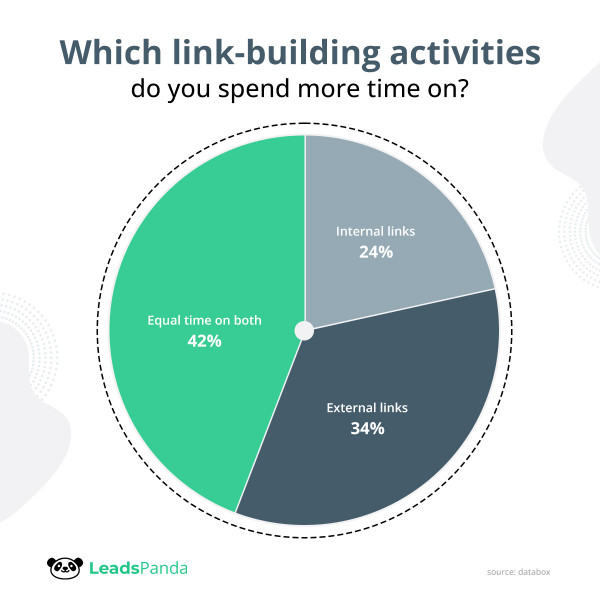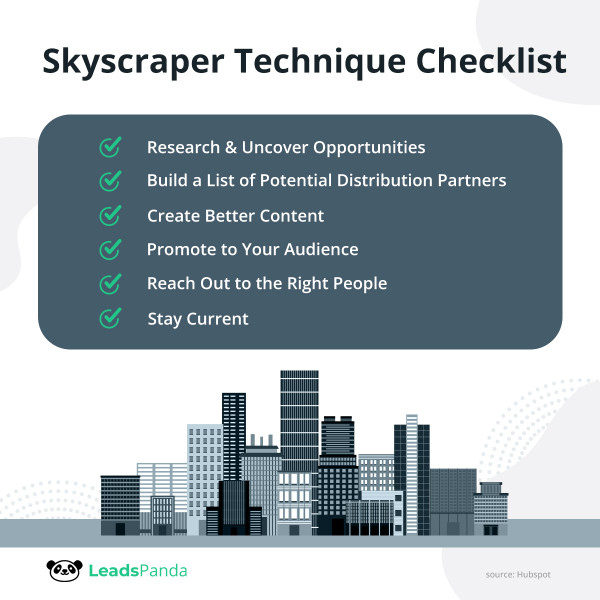Improve Your SEO Rankings With These Guidelines
We all know that SEO is a long game. Effective execution of any SEO strategy requires thoughtful preparation, dedication to a plan, and of course, patience. This doesn’t mean there aren’t some little tweaks and adjustments we can make today for fast results as we patiently wait for our long-term strategies to deliver.
Let’s go through some of our top options:
1. Prioritize Link Building
Did you know that link building—the simple act of linking to relevant, authoritative posts inside and outside of your website—can make a massive difference to your search engine ranking? It’s actually one of the top-ranking considerations for search engines like Google. But it can’t just be any ordinary link; it has to be relevant, high traffic, and authoritative.
To start, you can always add internal links that you think are relevant and add value to your post. But more importantly, if you want to build good links, you have to earn links from reputable and trustworthy sites as well.

This takes a little more effort than if you just tried to earn links from smaller websites—you’ll probably need to connect with webmasters, bloggers, editors, and publishers. Outreach requires time and effort, but the ROI is significant. When you get a credible, high-authority source to link back to you, your content gets recognized and becomes more visible. This can have a massive impact on your business’s exposure and search engine rankings.
2. Make Sure Content is SEO-Friendly
Content will always be the foundation of good search engine rankings. No matter how many times people say that SEO is dead because of constant algorithm changes and shifts, there’s a reason we always come back to it as a strategy. Even today, SEO can generate 6X more conversions for businesses that use it.
The key is to write content not just for search engines but for search engines AND people. This entails:
- Getting to know who your audience is so you can craft relevant topics, reach your target audience, and use the right keywords.
- Using your research strategically and adding keywords into header tags, meta tags, and seamlessly in the content.
- Making sure content is published on a fast and responsive website.
- Making the extra effort to promote content to relevant industry personalities and influencers.
3. Write Skyscraper Content
Skyscraper content serves as a comprehensive guide to users. It starts by addressing top-of-the-funnel consumer concerns or pain points; very general, overarching topics like “What is content marketing?” or “What is SEO?” and moving on to address more granular topics to address follow-up queries to the first questions.

A skyscraper topic can go to 1,000 or 2,000 words. The more comprehensive, the better, as these articles can ultimately help you become more visible on searches. However, it’s critical that every paragraph and sentence you write offers real value to your readers. You can’t take shortcuts or stuff words in to lengthen your post—it has to be well-written and informative.
4. Pay Attention to the Tech Side
Search engine rankings don’t just rely on written content or visual elements to determine whether or not your site deserves to rank high on searches. Consideration also goes to the technical aspect—your website.
If you have a site that is slow, isn’t search engine optimized, or has incomplete and dead links, that’s a big signal to Google that it’s not a good website to visit. You must make sure everything about your site runs seamlessly. From page loading times to site responsiveness—all these things matter. And remember, most users now use mobile devices like tablets and smartphones to access the internet more often than desktops and laptops. If they can’t navigate your content on a four-inch screen as easily as they would on a 20-inch one, you’re not doing your site any favors.
These are factors that you have to keep in mind and closely consider if you want to boost your ranking, especially since Google now crawls and indexes sites from a mobile-first perspective.
5. Improve the Click Through Rate (CTR) of Your Top Ranking Pages
Your CTR refers to the volume of users that see and click on your website when they run a search. For instance, if 100 people see your website when they search “content marketing tips,” but only 20 people click on it, that means you only have a CTR of 20%. Your goal is to bring this number up because it can have a tremendous impact on your search rankings.
From a search engine’s perspective, when more people click on one website versus others it pulled up in a search, this signals that it’s a better, more relevant site than the others on the list. How can you boost your CTR? Consider the following:
- Include your main keyword or key phrase in your title tag. Make sure to add it in the beginning whenever possible.
- Add your main and related keywords in your meta description.
- Use schema markup on your page.
One Final Thing When It Comes to SEO Rankings: Format Matters
Your readers don’t want to be presented with a boring, overwhelming wall of text when they go to your website. Search engines know this. You want a good balance of text, images, graphics, and other visual material that help make content more engaging and interesting.
Be sure to add relevant images and graphics to your content. The goal is to make the user experience easier and more engaging, but also to supplement your content with relevant data and information.
If you want to learn more, reach out to us. Book a consultation or get started with LeadsPanda to find out how we can help you.
For any questions, leave a comment below or check out our LinkedIn or Twitter.
Share This Story
2 Comments
Leave A Comment
Get the latest growth ideas, strategies, and best practices delivered to your inbox.
Quick read that helps 7000+ subscribers.









[…] phrase ‘content is king’ has been said many times, but in today’s SEO world, quality beats quantity. The days of writing lots of short, weak posts to rank higher are over. […]
What an interesting insight. Seeing actionable steps for boosting SEO that aren’t just vague advice. Implementing these tips looks totally doable and can really make a difference. Nice!